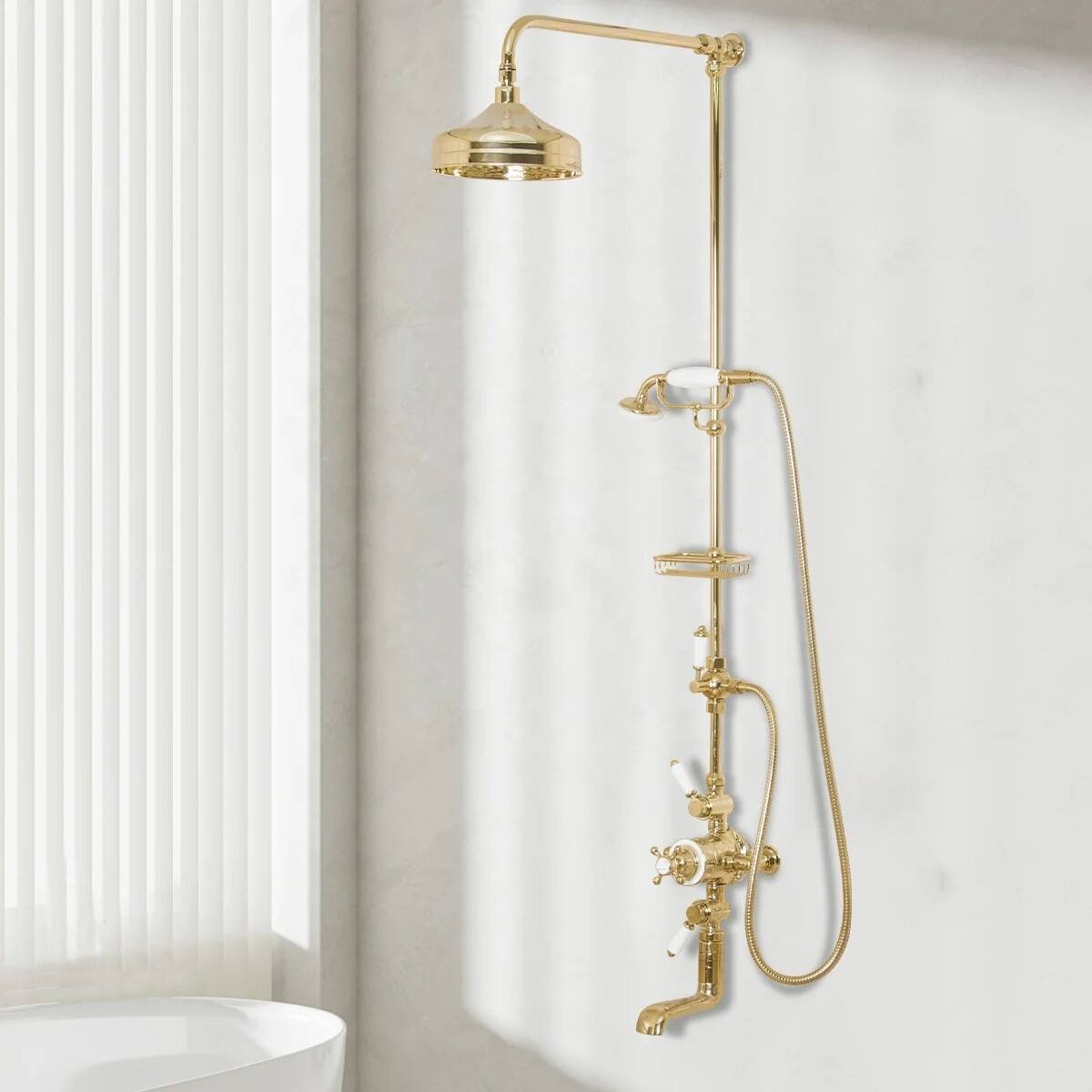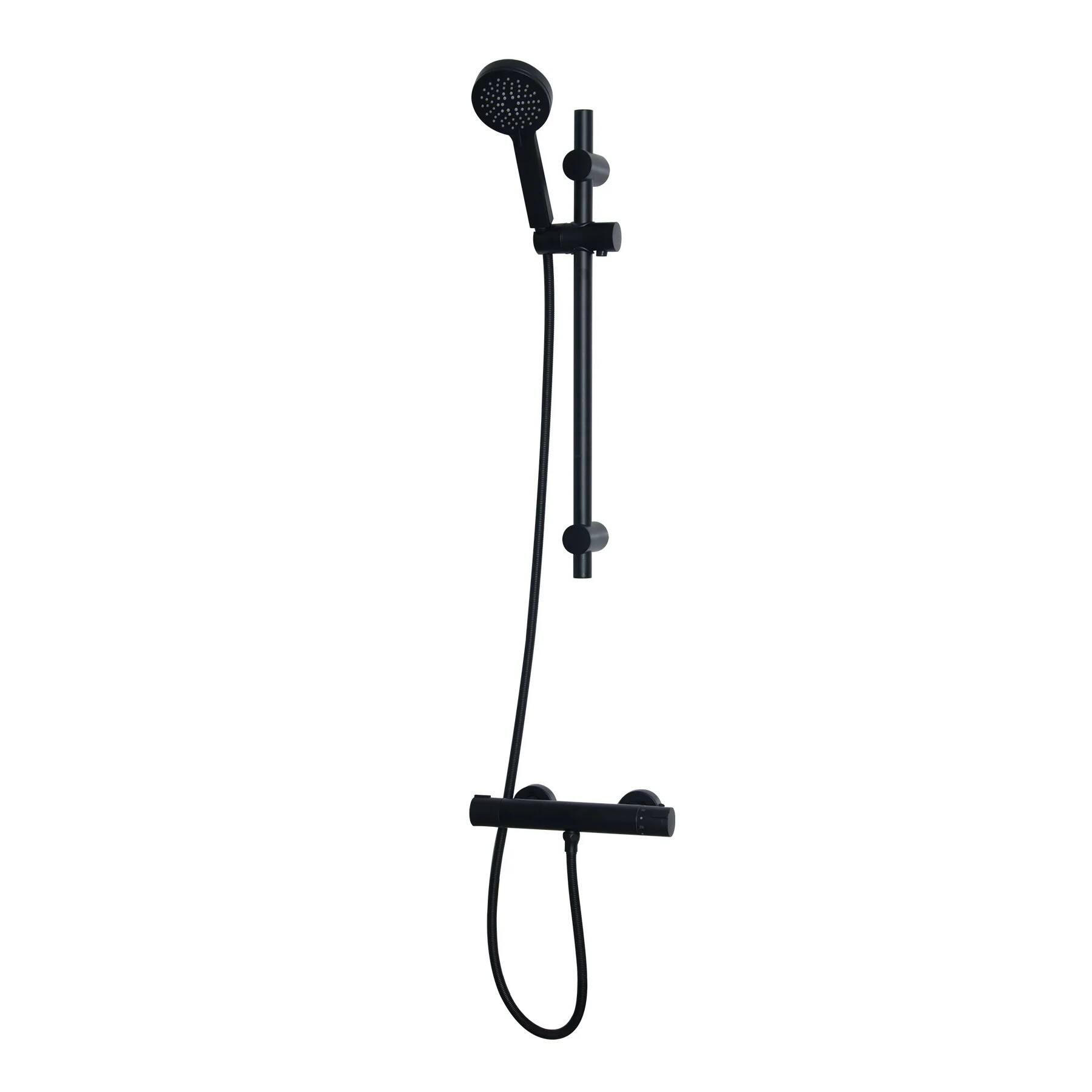Understanding Modern Shower Control Technologies
The choice between thermostatic and manual shower systems represents a significant decision for homeowners looking to upgrade their bathroom experience. These two distinct technologies offer different approaches to managing water temperature and flow, each with its own set of features and benefits. As bathroom technology continues to evolve, understanding the fundamental differences between thermostatic and manual shower systems becomes crucial for making an informed decision that aligns with your comfort needs and safety requirements.
Modern bathrooms have transformed from simple functional spaces into personal wellness retreats, making the selection of shower controls more important than ever. Whether you're renovating an existing bathroom or designing a new one, the type of shower system you choose will impact your daily routine and overall satisfaction with your bathing experience.
Core Components and Functionality
Thermostatic Shower System Mechanics
Thermostatic shower systems incorporate sophisticated temperature-sensing technology that automatically maintains your desired water temperature. At the heart of these systems lies a thermostatic cartridge containing a temperature-sensitive element, typically made from wax or bi-metal. This element expands and contracts in response to water temperature changes, automatically adjusting the mix of hot and cold water to maintain consistent output temperature.
The advanced mechanics include safety features such as anti-scald protection, which prevents water temperature from exceeding 38°C (100°F). This built-in safeguard makes thermostatic systems particularly valuable in households with children, elderly members, or anyone sensitive to temperature fluctuations.
Manual Shower System Construction
Manual shower systems, also known as standard mixer showers, operate through a simpler mechanical design. These systems blend hot and cold water through manual adjustment of the control handle. The internal components typically consist of ceramic discs or rubber washers that regulate water flow and temperature based on the user's manual input.
While more straightforward in construction, manual systems rely entirely on the user's ability to find and maintain the desired temperature balance. The mixing valve responds directly to handle movement, without any automated temperature compensation mechanisms.
Temperature Control and Stability
Precision and Consistency in Thermostatic Systems
One of the standout features of thermostatic shower systems is their ability to maintain precise temperature control. Once set, these systems can maintain water temperature within ±1°C, even when other water outlets in the home are in use. This level of stability ensures a consistent shower experience without unexpected temperature fluctuations.
The technology responds almost instantly to any changes in water pressure or temperature from the supply lines. Whether someone flushes a toilet or starts the dishwasher, the thermostatic valve automatically adjusts to maintain your selected temperature, preventing scalding or sudden cold spots.
Variable Performance of Manual Controls
Manual shower systems require ongoing adjustment to maintain desired temperature levels. When water pressure changes occur elsewhere in the plumbing system, users often need to readjust the controls to restore comfortable temperature levels. This characteristic can lead to less consistent shower experiences and potentially uncomfortable temperature variations.
While modern manual systems have improved significantly in terms of control sensitivity, they still cannot match the automatic compensation capabilities of thermostatic systems. Users must actively monitor and adjust temperatures throughout their shower, especially in homes with multiple water users.
Safety Features and User Protection
Advanced Safety in Thermostatic Design
Thermostatic shower systems excel in safety features, making them particularly suitable for family bathrooms. The built-in temperature limit stop prevents accidental scalding, while the automatic shutdown feature activates if either hot or cold water supply fails. These safety mechanisms operate independently of user input, providing constant protection.
Additional safety features often include cool-touch exterior surfaces on controls and spouts, preventing burns from hot metal surfaces. Many thermostatic systems also offer memory settings, allowing users to return to their preferred temperature settings without trial and error adjustment.
Basic Safety Measures in Manual Systems
Manual shower systems typically incorporate more basic safety features, primarily relying on user awareness and careful adjustment. While some manual mixers include temperature limits or markings, these are generally mechanical stops that can be overridden and don't automatically prevent temperature spikes.
The primary safety consideration in manual systems comes from proper installation and maintenance, ensuring smooth operation of the mixing valve and clear temperature markings on controls. Users must exercise more caution and attention when adjusting temperatures, especially during pressure fluctuations.

Cost Considerations and Long-Term Value
Investment in Thermostatic Technology
Thermostatic shower systems generally represent a higher initial investment compared to manual alternatives. The sophisticated temperature-control mechanisms, additional safety features, and higher-quality materials contribute to increased upfront costs. However, these systems often prove cost-effective over time through reduced water waste and potential energy savings.
The durability of thermostatic cartridges and components typically results in longer service life and fewer replacement needs. Many manufacturers offer extended warranties on thermostatic systems, reflecting confidence in their longevity and performance reliability.
Economy of Manual Systems
Manual shower systems present a more budget-friendly initial purchase option. Their simpler construction and fewer components generally translate to lower manufacturing costs and, consequently, lower retail prices. Installation costs may also be lower due to less complex plumbing requirements.
However, the long-term economics should consider factors such as potential water waste during temperature adjustment, more frequent maintenance needs, and possibly shorter service life compared to thermostatic alternatives. Regular replacement of washers or cartridges may be necessary to maintain proper function.
Frequently Asked Questions
How long do thermostatic shower systems typically last?
High-quality thermostatic shower systems typically last 15-20 years with proper maintenance. The thermostatic cartridge, which is the heart of the system, may need replacement every 7-10 years depending on water quality and usage patterns. Regular cleaning and descaling can significantly extend the system's lifespan.
Can manual shower systems be upgraded to thermostatic ones?
Most manual shower systems can be upgraded to thermostatic versions, though this may require some plumbing modifications. The upgrade typically involves replacing the valve body and controls, while potentially reusing existing shower heads and trim pieces. Professional installation is recommended to ensure proper function and safety.
Which system is better for homes with low water pressure?
Thermostatic shower systems generally perform better in low water pressure situations because they can maintain consistent temperature even with reduced flow. Many thermostatic models include pressure-balancing features that optimize performance under varying pressure conditions. Manual systems may struggle to maintain comfortable temperatures when pressure fluctuates.


